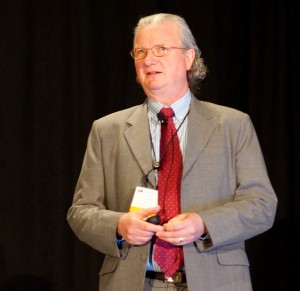Behind the buzz: How to apply manufacturing methods to well construction
By Linda Hsieh, managing editor
A shift in focus from services to deliverables and products would help the industry to apply manufacturing methods, such as Lean Manufacturing, to well construction and thereby realize significant opportunities in cost reduction and efficiency gains, John de Wardt, president of De Wardt and Company, said in a presentation on 7 March at the 2012 IADC/SPE Drilling Conference in San Diego, Calif. “Manufacturing is about products; it’s not about services,” he said.

This means that companies who wish to have “manufactured” wells must drive their well designs toward more standardization. “Problem here is we have subsurface uncertainties, and these uncertainties then have a consequence on our schedule and costs. And they create risks to the well design because something can change with those uncertainties in the design of the well,” Mr de Wardt noted.
He explained that he sees the drilling industry as doing excavation, followed by assembly, where the former is the creation of the borehole and the latter is the actual creation of the well. While the assembly portion of the process is similar to manufacturing, excavation activities are not, he said. “The question then becomes how to make the excavation part similar to manufacturing where you can apply these manufacturing methods. I believe there’s a way to do that, and that is by changing the excavation part to focus on deliverables instead of focusing on the service. If you define those activities such that we have a deliverable, it becomes akin to having a product,” Mr de Wardt explained.
In the assembly part as well, companies who wish to adopt the manufacturing approach must pursue standardization, because the more standardized the product is, the more repeatable the process.
“If you’re going to shift from services to products, it’s a change in culture, and that’s probably the most difficult part of it,” he said. This shift will mean that suppliers must become involved in the planning and execution phases. “You can’t pass on the accountability for a deliverable if you design it and just hand it over the fence. The person who’s going to deliver it and be accountable for it must be part of the planning process.”
Once that focus on deliverables is adopted, the company will be able to create a workflow that’s aligned to the customer value. This is critical because defining the customer value defines the end product; it turns companies into delivery-focused organizations, Mr de Wardt said.
Finally, with an aligned workflow in place, companies can start to look for and eliminate “wastes.” “You’d be absolutely surprised at how much waste occurs when you don’t look at it. Without mapping out and looking at that workflow, you can’t decide what is waste and what is not waste,” he said. “Waste is anything that does not deliver customer value.” For drilling, streamlining this workflow will include making efforts to “de-bottleneck” the rotary table in order to improve performance, such as utilizing parallel activities or more novel concepts such as using multiple machines for different well activities.
Looking to the future of well manufacturing and its growing prominence in the drilling industry, Mr de Wardt said he believes oil companies are starting to and may continue to vertically integrate. “There are independent oil companies who are buying their own drilling rigs, who are buying their own frac units, and knocking out, say, $500,000 a well, from one play I’ve seen. There are some large oil companies who are looking seriously at this, so vertical integration could come back again,” he said. “The advantage is they control that machine called a drilling rig, which really is the core of the factory.”




